MISCELANEOUS PRODUCTS
Saunders-Roe became early experts in using aluminium alloy construction. After WW2 they turned their hand to designing and building numerous products and experimental items. In the 1960's when I was an apprentice they were building aluminium radar aerials for battle ships and diving re-compression chambers. I became very involved with the chambers and spent many happy hours designing and drawing them. Before I joined the company my father would come home with many tales, often amusing, or of strange incidents and even stranger characters who worked there. The Naval boat building was almost finished when I joined, but for some crude steel Army assault boats. They started building in glass fibre reinforced plastics and became proficient at many new products.
Other earlier designs included Minesweepers, aluminium airborne lifeboats, aircraft refueling tankers, HTP (High Test Peroxide - rocket fuel) tankers, an experimental Hydrofoil for the Royal Canadian Navy and many other items that my father helped design.
AIRBORNE LIFEBOAT
Airborne Lifeboat fitted with purpose designed HRD twin cylinder engine. They were of all-aluminium construction with bright yellow hulls and blue front and aft dodger covers. They were deployed from modified Shackleton aircraft on two parachutes at a rate of 20 ft per second. They had grab rails along the hull just above the waterline and a fold down hatch centrally located on both sides to allow survivors to easily crawl into the lifeboat. A number of these craft were sold out of service and became a familiar sight around the British coast for many years. In this photo my father is seated at the centre of a lifeboat.

Airborne Lifeboat clearly showing grab rails and central access hatch.

Airborne Lifeboat 802. Victor Mills in the centre.
SHIP'S LIFEBOAT
A Ship's Lifeboat design could be fitted with 'Fleming' Hand Propelling Gear, a Stuart Turner petrol engine of simple used with oars. These drawings by my father are from the brochure for this usual craft.
I have a brochusre and original full-size prints of these fine technical illustrations drawn by my father Victor Mills.
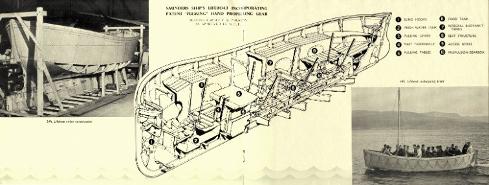
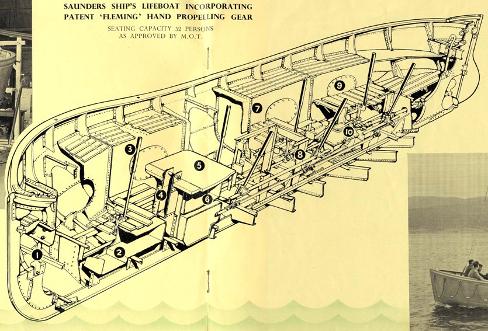
This version shows the 'Fleming' Hand Propelling Gear.
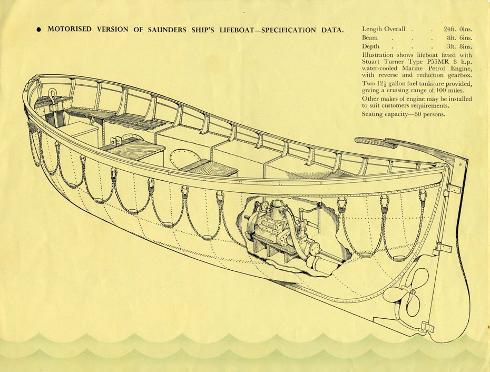
This one is fitted with a Stuart Turner P55MR 8HP petrol engine.
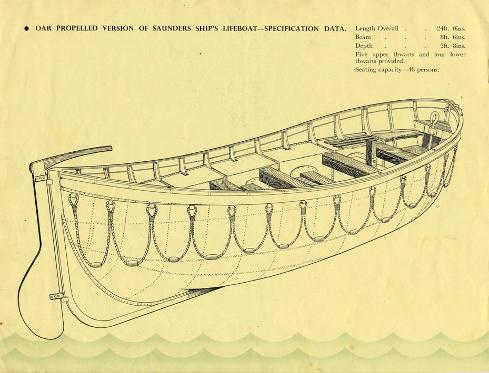
And finally the basic rowing version
SARO TERRAPIN
In an advertising film I have of the Terrapin it states that it's a Folland craft although they were built at SARO (Anglesey) Ltd. Perhaps it originated from the Folland, Hamble, Hampshire factory. My father also worked there during WW2 imediately before coming to Saunders Engineering & Shipyard, later SARO (Anglesey) Ltd. Some coincidence?
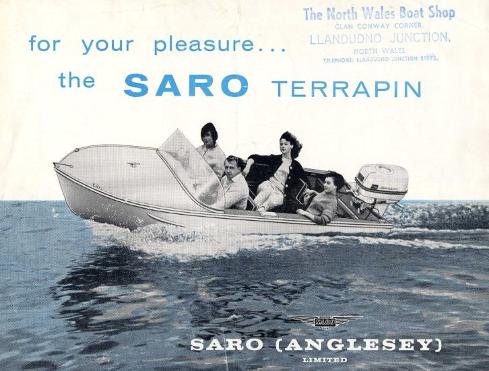
A number of these fine little aluminium runabouts are still in existence.
If you wish to contact me please
ALUMINIUM ALLOY BUSES
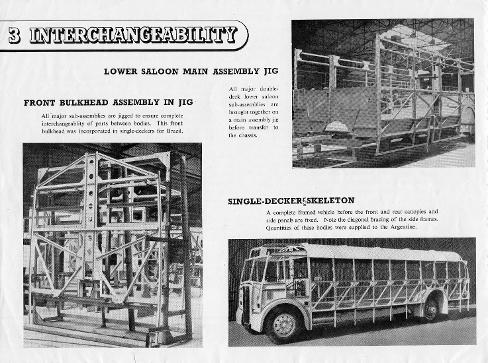
NEW SLIPWAY 1952 - 1953
The New Slipway was built to replace the earlier conventional one that was used during the war to land flying boats. This funicular design had trapezoidal shaped launching trolley that ran on a set of inclined rails from high level to the lower slipway level. The rails had a very large vertical radius so that the trolley top was level at the upper factory level, but ended on an incline at the lower level to enable gravity assistance in launching the boats. The structure was scrapped some years ago and the earthworks are now overgrown, but visible from the main road east of Beaumaris. One earlier proposal was to run an incline from the factory directly to the sea, but there was insufficient headroom for double-decker busses to pass under it where it crossed the road. Only single decker buses use the route today.
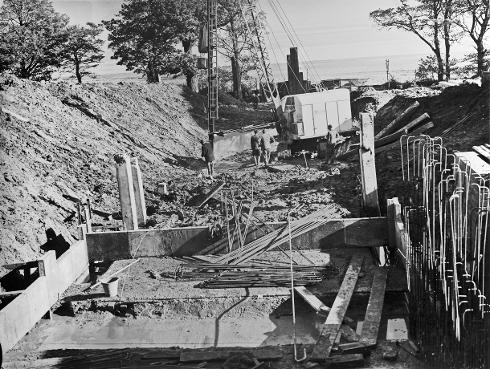
Pile driving 15th October 1952
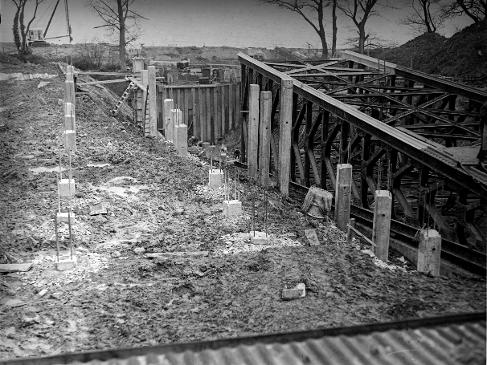
Launch trolley in place on the tracks January 1953
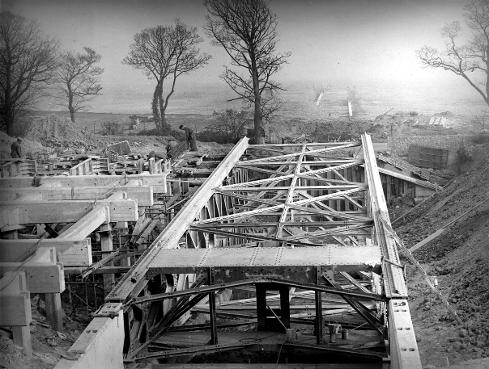
New slipway nearing completion 24th March 1953 with boat storage areas being constructed on each side.
NOTE: An entry in "Wings Across the Border" page 168 shows an arial photograph of the Saunders-Roe Friars work site dated late 1940's. It is more like around 1965/6 when the pre-fabs were being demolished and new council houses were being built behind the factory. The 'New' slipway was in fact out of use and decaying by the time the photo was taken. The mention of buses being still in the yard is curious as they had long ceased production of them. The photo of the site on page 165 is dated late 1940's and would seem about right. Page 145 does have an excellent arial photo of the works in 1945 and quite different to the first mentioned photograph. There are also some very good photos of flying boats at Friars in the book.
MINESWEEPERS
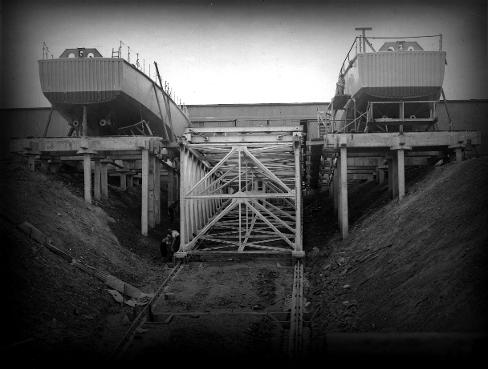
The new slipway 24th September 1953. This pair of Minesweepers must have been the first to use the new facility (compare this photo with the previous one showing an unfinished structure excactly six months earlier).
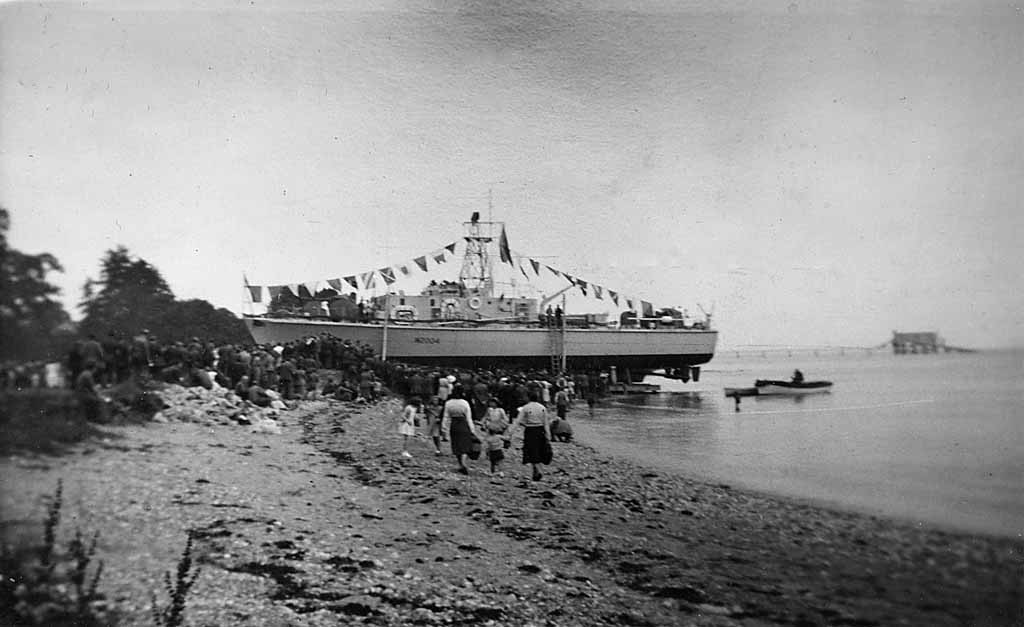
Launching of Minesweeper M2004 HMS Brenchley (22 September 1954?)
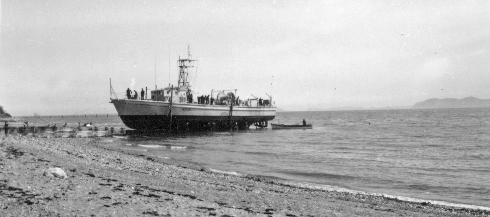
Minesweeper M2722 HMS Rackham
An excellent website including 'ton, 'ham, 'ley and 'ford Class Minesweepers.
Look under 'More' to find them.
SAUNDERS-ROE STAFF

Staff outside the main offices at Saunders Roe. My father Victor Mills is the second from the right. This old house was previously in private ownership then taken over as offices during WW2. It's once again in private ownership.
